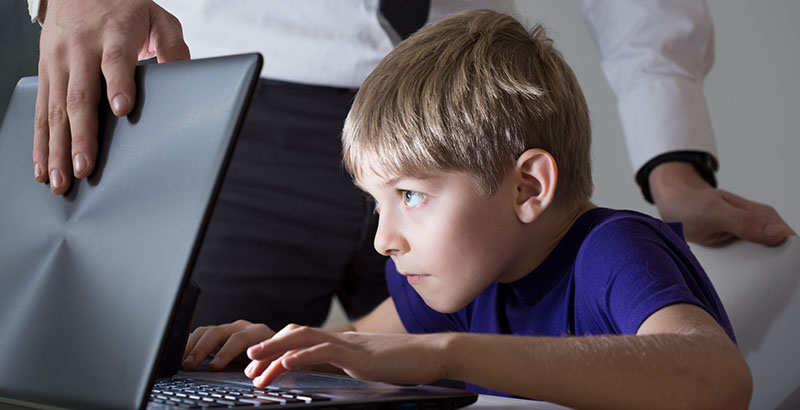‘Why Do I Want Digital Experiences for My Kids If It Looks Like This?’ — Experts Fear Parent Backlash Against Online Learning

School districts countrywide are learning their own lessons right now, all about distance learning. A fluid situation for most, messy for some, nonexistent for others — no matter what each district learns right now, it will have a lasting impact on the future of online education.
“It is certainly complex,” says Michael Horn, a co-founder of the Clayton Christensen Institute for Disruptive Innovation. “When families need to be served at home, it can be incredibly difficult, but it can be incredibly important. Students and families are relying on these resources, frankly not just for their learning, but so they can get by on a day-to-day basis.”
In some states, schools have been closed for weeks. Others are new to the situation, all brought on by the social distancing requirements of the coronavirus outbreak. Every district, though, must make decisions in the face of long-term closures about what distance learning looks like, based on available resources.
“I would say, take stock of where you are and the resources you actually have as a district,” Horn says. “Maybe step back and see what’s the objective. Given the resources we do or don’t have, what is the right way to achieve those ends?”
Districts moving online too quickly can spark a backlash from parents against online learning, Horn says, especially if it seems incoherent or families don’t feel they’re receiving enough support. “You could create an experience that is a challenge to begin with because families are not in a position to absorb this and teachers are not in a position to do this well,” he says. “It creates a really sour experience in people’s mouths. Why do I want digital experiences for my kids if it looks like this?”
If that backlash occurs, districts may have a tough time forming a well-adopted online learning plan for any extended school closures and could struggle to get family buy-in if and when they formalize a plan.
But Horn and other experts say that doing nothing simply isn’t an option.
“Something is better than nothing,” says Mike Petrilli, president of the Thomas B. Fordham Institute and a research fellow at Stanford University’s Hoover Institution. “We need to be reasonable about what is doable, but I don’t see any excuse weeks or months later to just do nothing. That is just accepting weeks or months of learning loss that will also exasperate parents.”
Robin Lake, director of the Center on Reinventing Public Education, a nonpartisan research and policy analysis organization housed at the University of Washington, says rushing into the wrong solution could create confusion, but she understands the clear urgency. “This is all uncharted territory,” she says. “Delivering instruction online is a different challenge for educators. Things could go badly if there is too much rushing. On the other hand, doing nothing is a sure path to exacerbate inequalities we have. We are staring down the barrel of a fairly significant learning loss if we do nothing.”
Petrilli says most districts are walking through three stages of school closures, starting with the actual shutdown — basically an extended spring break. The next phase, he says, should be to get enrichment resources out there, whether in the form of printed packets or online materials. The third phase, though, is about getting back to real instruction, trying to deliver real curriculum. How that happens will help set a framework for how districts and parents approach online learning in the future and inform how districts set up emergency plans for similar situations in the future.
The sudden school closures have certainly forced their hand, requiring education leaders to explore digital learning in a way they had never imagined needing. Horn says districts with disaster preparedness plans already in place have been able to more quickly pivot to distance learning. Lake wants districts not to overcomplicate the process, focusing first on student relationships and scaled-down lessons. Then they can tweak as they go. “The most important thing right now,” she says, “is for teachers to be connected to their students.”
With the risk of intermittent school closures still present come fall 2020 — or beyond — Horn says districts are realizing they need to be thoughtful and comprehensive about disaster planning. “It is not just slapping online what we already have, but looking more holistically at a set of resources,” he says.
When physical classrooms reopen, what education leaders learn now about online lessons can help create more hybrid curricula and assist teachers in incorporating online resources into daily learning. Maybe some schools will adopt college-style courses where students aren’t constantly in class. Or maybe snow days will be a thing of the past, as schools simply switch gears to remote learning.
“Schools need to think about that,” Petrilli says. “There may not be a going back to normal. There is some good that comes out of this in that it has forced educators to get more comfortable with the various tools available to make remote learning possible.”
Get stories like these delivered straight to your inbox. Sign up for The 74 Newsletter

;)
